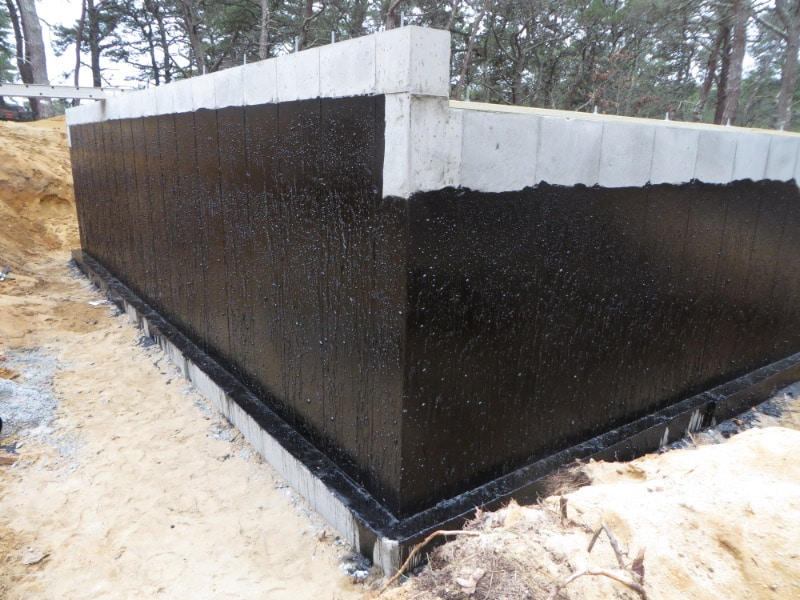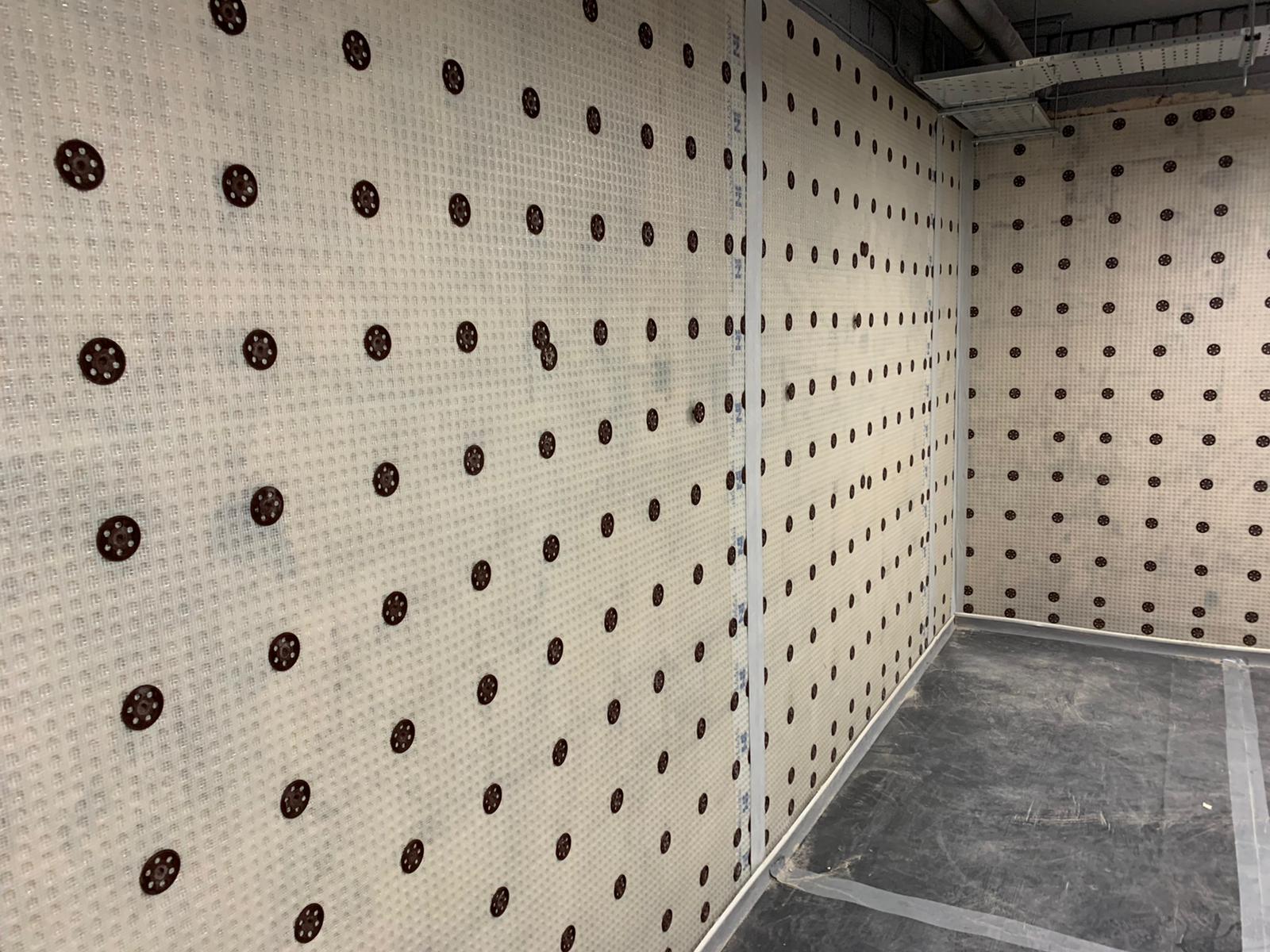Essential overview to understanding rising damp and damp removal newcastle
Checking Out the Different Techniques and Solutions for Effective Damp Proofing
Moisture in buildings presents significant challenges to both structural stability and interior air quality. Different strategies and solutions have actually arised to battle this prevalent issue. From conventional damp-proof membranes to innovative chemical treatments, each technique provides one-of-a-kind advantages. Understanding these options is necessary for effective dampness control. Nevertheless, selecting the right solution depends on certain structure conditions and needs, motivating further expedition right into the most effective wet proofing methods readily available.
Understanding the Root Causes Of Dampness
Moisture can occur from various sources, understanding these reasons is essential for reliable remediation. Frequently, moisture originates from three main sources: increasing damp, permeating damp, and condensation. Rising moist takes place when groundwater travels up with porous materials, such as brick or stone, commonly because of a lack of a reliable barrier (damp removal newcastle). Permeating wet is generally brought on by external aspects, consisting of roof covering leaks, faulty seamless gutters, or harmed wall surfaces, permitting water to infiltrate a home. Condensation, on the other hand, arises from excess moisture airborne, frequently exacerbated by inadequate air flow and temperature distinctions, bring about water beads forming on surfaces. Identifying these underlying concerns is important, as each kind of wetness requires a tailored strategy for remediation. Correct assessment helps in determining the most efficient options, ultimately protecting the structural integrity of a structure and enhancing interior air top quality
Standard Damp-Proof Membrane Layers

Chemical Damp-Proofing Solutions
Chemical damp-proofing services supply an innovative method to avoid wetness intrusion in structures. These methods commonly include the application of fluid chemicals that penetrate stonework and develop a barrier against increasing moist. Commonly made use of chemicals consist of silanes, siloxanes, and various other water-repellent representatives that respond with surface area products to produce a hydrophobic layer.The application process usually calls for drilling holes right into the walls, injecting the chemical service, and permitting it to treat. This approach is specifically helpful for older frameworks where typical damp-proof membranes may be not practical. Moreover, chemical damp-proofing can be less disruptive and extra cost-effective than extensive renovation projects.While reliable, these services depend on appropriate application and ecological problems for peak performance. Regular maintenance and surveillance are vital to guarantee the longevity of the damp-proofing therapy. On the whole, chemical damp-proofing represents a functional option for protecting structures against moisture-related damage
Cavity Wall Surface Construction Techniques
Dental caries wall surface construction strategies offer various advantages, specifically in dampness control and energy efficiency. By incorporating an air gap in between 2 layers of masonry, these walls effectively alleviate water ingress while enhancing insulation. This mix not only safeguards structures from wetness yet additionally adds to reduced power usage.
Advantages of Cavity Walls
When thinking about reliable damp proofing approaches, the advantages of dental caries walls stand out prominently. Cavity walls are composed of two different layers, producing an air void that successfully minimizes wetness infiltration. This style decreases the risk of moisture, as the external wall functions as a barrier versus rainfall and water ingress. Additionally, dental caries walls improve thermal insulation, which adds to energy performance by reducing warmth loss. They also give audio insulation, helping to produce a quieter indoor setting. The air gap permits for ventilation, which aids in dampness control and decreases the chance of mold growth. These benefits not just improve the general comfort of a building however also add to its long life and architectural integrity.
Wetness Control Techniques
Effective dampness control strategies are important in dental caries wall surface building to guarantee lasting security versus dampness. One key technique includes the incorporation of weep holes, which facilitate water drain from the cavity, avoiding build-up. In addition, using breathable membrane layers can aid handle dampness degrees while allowing trapped vapor to run away. Correct placement of insulation is also vital, as it must not block drainage paths. Furthermore, making certain that the external leaves of the tooth cavity wall surface are built with water-resistant products improves total resilience. Regular upkeep checks are essential to recognize any type of blockages or damage early, protecting the framework's honesty. Ultimately, a combination of these methods forms a durable defense against moisture breach in tooth cavity walls.
Insulation and Energy Performance
Insulation plays an essential duty in enhancing energy efficiency within cavity wall surface building. By incorporating protecting products, these wall surfaces develop a thermal obstacle that decreases warmth loss and lowers energy intake. Efficient insulation not just helps maintain a secure interior temperature however likewise mitigates the threat of moisture, as it protects against condensation within the wall surface cavity. Numerous strategies, such as using inflexible foam boards or mineral woollen, can be used to attain ideal insulation performance. Furthermore, appropriate installation is vital to ensure that spaces and voids are minimized, which can or else endanger energy effectiveness. Eventually, a well-insulated cavity wall surface adds considerably to total sustainability and reduces heating & cooling expenses for homeowners.
Exterior Damp Proofing Techniques
External moist proofing approaches are essential for shielding frameworks from wetness infiltration. Two efficient techniques include the application of water resistant membranes and the setup of French drains pipes. These options aid mitigate water build-up and maintain the integrity of structures.
Waterproof Membrane Layer Application
While different methods exist for avoiding dampness access, the application of water-proof membranes remains a highly reliable exterior damp proofing method. These membranes are usually made from materials such as polyethylene, rubber, or customized asphalt, supplying a durable barrier versus water penetration. The installment process entails applying the membrane to the external surfaces of structures or walls, making sure complete protection to prevent leaks. Appropriate adhesion and securing at joints are crucial to taking full advantage of effectiveness. Water resistant membranes can be used in numerous forms, consisting of fluid finishes and sheet membranes, enabling flexibility based upon the certain requirements of the structure. This method not only safeguards structures from dampness yet additionally boosts their longevity and structural integrity.
French Drainpipe Installation
One effective technique for taking care of groundwater and stopping dampness accumulation around a structure's structure is the installment of a French drain. This water drainage system contains a trench filled with gravel and a perforated pipeline that reroutes check out this site surface area water away from the foundation. Appropriate installation needs careful planning, guaranteeing that the drainpipe inclines far from the framework to facilitate ideal water flow. Furthermore, the area of the drainpipe is essential; it needs to be placed in areas susceptible to merging or excess dampness. Regular upkeep, consisting of clearing up particles from the gravel and ensuring the pipe remains unhampered, is essential for long-lasting performance. Ultimately, a well-installed read the article French drain can considerably decrease the threat of water-related issues in cellars and foundations.
Interior Waterproofing Methods
Inside waterproofing approaches are essential for safeguarding a structure's interior from wetness seepage and possible water damage. These methods normally involve the application of specific materials and strategies made to create a dampness obstacle within the structure. One common strategy is making use of waterproof layers or sealants on wall surfaces and floors, which prevent wetness from permeating surfaces.Additionally, setting up interior drain systems, such as sump pumps, can properly handle water buildup in cellars and crawl areas. Another method involves the use of vapor obstacles, which are installed to hinder wetness motion from the ground into living spaces.Moreover, attending to any fractures or spaces in walls or foundations with appropriate sealants ensures a thorough defense versus water intrusion. By carrying out these interior waterproofing approaches, residential or commercial property proprietors can significantly lower the danger of mold and mildew development, architectural damage, and various other moisture-related issues. Appropriate implementation of these methods is necessary for lasting protection and structure integrity.
Normal Maintenance and Examination Practices
Regular upkeep and examination methods are vital for ensuring the lasting performance of wet proofing services in any kind of building. Routine checks enable home owners to determine very early indicators of wetness invasion, such as peeling paint, mold and mildew development, and moldy odors. These indicators can indicate underlying concerns that call for prompt attention.Inspections need to be performed at the very least annually, focusing on at risk locations like basements, crawl rooms, and outside wall surfaces. Throughout these assessments, residential or commercial property owners must check out sealants, water drainage systems, and ventilation to confirm they function correctly.Additionally, maintaining downspouts and seamless gutters is necessary, as clogged up systems can cause water accumulation near the foundation. Applying a regular upkeep schedule, together with timely fixings, can significantly expand the lifespan of damp proofing steps and shield the structural honesty of the structure. Proactive measures eventually add to the total health and wellness of the living environment.
Regularly Asked Inquiries
How Much Time Does Damp Proofing Normally Last?
The duration of wet proofing effectiveness differs, generally lasting in between 20 to half a century. Factors such as application quality, environmental problems, and maintenance techniques considerably influence the long life of the damp proofing therapy.

Can I Damp Proof My Home Myself?
The individual considered the expediency of DIY damp proofing. With proper research and the appropriate products, it is possible. They also acknowledged the relevance of specialist guidance to ensure long-lasting effectiveness and protect against future issues.
What Are the Signs of Ineffective Damp Proofing?
Indicators of inefficient damp proofing consist of persistent stuffy smells, visible mold and mildew growth, peeling off paint, damp spots on walls, and timber decay - damp specialist newcastle. Property owners need to attend find more info to these concerns promptly to stop further damages and health worries
Does Damp Proofing Affect Indoor Air Quality?

Just How Much Does Professional Damp Proofing Price?
Expert moist proofing costs differ significantly, usually ranging from $1,000 to $5,000 relying on the property's dimension, the level of the moist concern, and chosen techniques. Each situation calls for a tailored evaluation for exact pricing. Frequently, dampness originates from 3 key sources: increasing wet, penetrating moist, and condensation. When taking into consideration effective moist proofing approaches, the advantages of tooth cavity wall surfaces stand out plainly. Exterior damp proofing approaches are vital for protecting structures from dampness infiltration. While numerous techniques exist for preventing wetness access, the application of water resistant membrane layers remains a very effective outside wet proofing technique. Indications of ineffective moist proofing consist of persistent mildewy odors, visible mold and mildew growth, peeling paint, wet spots on walls, and timber degeneration.